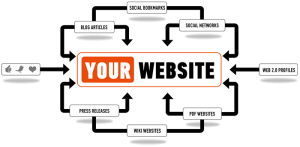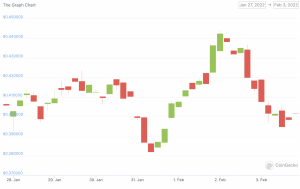
If we’re the same as everybody else, nobody will remember us. If we’re a brand, we want to be memorable, right?
We want people to think of us when they are thinking about purchasing a product or service that we offer.
If we have a point of difference to our competitors, we are more likely to be remembered. We also want to offer a unique benefit that our competition does not offer.
This week’s marketing blog, this article explores differentiation as a business strategy.
What is differentiation?
Product differentiation is a marketing management strategy that aims to distinguish or differentiate a company’s products or services from the alternatives offered by competitors. Businesses communicate their unique and distinctive benefit through the marketing strategy to make it attractive to a group of customers/target market.
Also referred to as a point of difference, providing customers with a unique and distinct benefit can create a competitive advantage in that marketplace.
It is a powerful strategy when a target group of customers is not price-sensitive (a price increase will not reduce demand), when a market is competitive and saturated with options, or when a group of customers have specific needs that are under-served.
“Point of difference?—?even seemingly contradictory ones?—?can be powerful. Strong, favourable, unique associations that distinguish a brand from others in the same frame of reference are fundamental to successful brand positioning.” (Keller, Sternthal & Tybout, 2002)

Objectives of differentiation
The underlying objective of differentiation is to make your brand different to and more attractive than your competitors. Develop a position in the market that potential customers see as unique and valuable.
Perceived differentiation is subjective from customer to customer, from brand to brand. It is marketing’s job to alter this perception and customers’ evaluation of the benefits of one brand’s offering compared to another.
When a product or service becomes more unique, it will attract fewer comparisons with competitors, and it moves away from competing on price.
This uniqueness helps to achieve a competitive advantage in a crowded marketplace.
Product differentiation helps develop a strong value proposition, making a product or service attractive to a target market.
“Offering a product that is perceived to differ from the competing products on at least one element of physical and nonphysical product characteristics… Product differentiation can be based on perceived as well as actual physical and nonphysical product differences.” (Dickson & Gitner, 1987)
Marketing’s role in differentiation
Differentiation is a brand management tool that results in perceived uniqueness, even if the physical product and functional benefits are the same or like competitors. Businesses can pursue differentiation through product design and actual product characteristics, but they can also pursue differentiation through marketing alone.
Advertising highlights the non-functional/physical features and characteristics, like a feeling you get from that brand, or maybe the prestige. Fashion for example?—?there is probably not much difference between a $ 50 Nike T-shirt and a $ 5 unbranded T-shirt. Marketing establishes a perception of key benefits and differences of a brand that make it ‘a better choice’ than the alternatives.
Marketing demonstrates that a brand’s offering can do everything the competitors can but has unique additional benefits. It identifies the qualities that set it apart, creating a sense of value.
Businesses and brands can create differentiation through something as simple as packaging. It could be an aesthetic change in design and styling or a change in distribution. Selling your product at supermarkets for example could give it a point of difference if the product category or service is not typically found in supermarkets.
Promotion and advertising play a crucial role in differentiation. All the big brands you can think of, such as McDonald’s, Nike, Apple, Microsoft, and Coca Cola, they all invest heavily into promotion to help set their brand apart from the competitors. These brands communicate a USP (unique selling proposition) in their advertising that distinguishes them from the competition, making their brand more appealing.
Businesses need to communicate how and why they are different. Even if they are not different at all, it comes down to buyers perceiving a difference that they value.
“Differentiation tends to be characterized by heavy use of advertising and promotion and to result in prices that are somewhat above the equilibrium levels associated with perfectly competitive market conditions. It may be classified as a promotional strategy or approach to marketing.” (Smith, 2006)
Types of differentiation
There are two main differentiation strategies a business can use. Firstly, a broad differentiation strategy where the brand or organisation is the focus. The application is to industry and will appeal to a vast range of consumers. Secondly, a focused differentiation strategy is at a product/service level, fulfilling the requirements of a targeted niche market.
Some of the applications of differentiation at an organisational and product-level are:
Organisation:
• Create a unique brand image and reputation. Align the overall brand with a unique theme, emotion or benefit
• Service quality and customer support
• Technical expertise
• Innovation
• Distribution
• Location
Product:
• Match the needs and preferences of customers through providing utility,
• Innovative product design,
• Unique features or functionality,
• Increased product performance or durability,
• Improved quality accompanied by an increase in price.
“From a strategy viewpoint, product differentiation is securing a measure of control over the demand for a product by advertising or promoting differences between a product and the products of competing sellers. It is basically the result of sellers’ desires to establish firm market positions and/or to insulate their businesses against price competition.” (Smith, 2006)
Benefits of differentiation
There are several benefits to businesses who adopt a successful differentiation strategy. Ultimately creating a competitive advantage and more customers choose their brand over alternatives from competitors.
Some of the other potential benefits of differentiation are:
• Develops a strong brand identity and increases brand awareness.
• If perceived by customers as superior to alternatives, this increases their loyalty to the brand.
• Reduces perceived substitutes as customers may not be willing to replace your product with another one. This increases market share.
• Allows the business to charge a premium price for their brand, increasing profit margins.
• Provides reduced price competition by competing on something other than lower prices.
• Customers become less price-sensitive to competitor offers?—?If they perceive a product to be better than its competitors, consumers will consider it worth the higher price.
• Improved cross-price inelasticity with competing brands as demand is unaffected by competitors lowering prices.

Choosing a Differentiation strategy
A specific group of customers must value any differentiation strategy that a business chooses, and its effectiveness will depend on the industry and location you are in. What customers value will often change over time as competitors imitate your unique benefits and latest trends come along, changing consumer tastes and preferences.
A sustainable point of difference/differentiation strategy needs to meet three deliverability criteria. It must be feasible, profitable and not easily imitated. Your marketing mix will communicate the unique benefits of your differentiated offering to the marketplace.
To find their point of difference, businesses should first analyse their strengths and weaknesses as well as look for opportunities in the marketplace. A business may have unique capabilities or resources that will be difficult to replicate by other firms.
A SWOT and/or PESTEL analysis, as well as Porter’s 5 Forces analysis, is a good place to start to find any gaps or opportunities in the greater market. Customer research will also help to better understand their wants and needs, to align your offering and selection of a point of difference.
This research and development may involve a huge cost, as will the marketing, but the long-term benefits and return on investment of sustainable competitive advantage is well worth the effort and initial costs.
That is this week’s blog on differentiation strategy.
Having a point of difference sums it up.
If you want your target market to remember you next time they purchase a product or service you offer?—?give them something unique about your business, brand or product/service to remember!
I hope you enjoyed this week’s content.
Business & Finance Articles on Business 2 Community
(102)
Report Post







